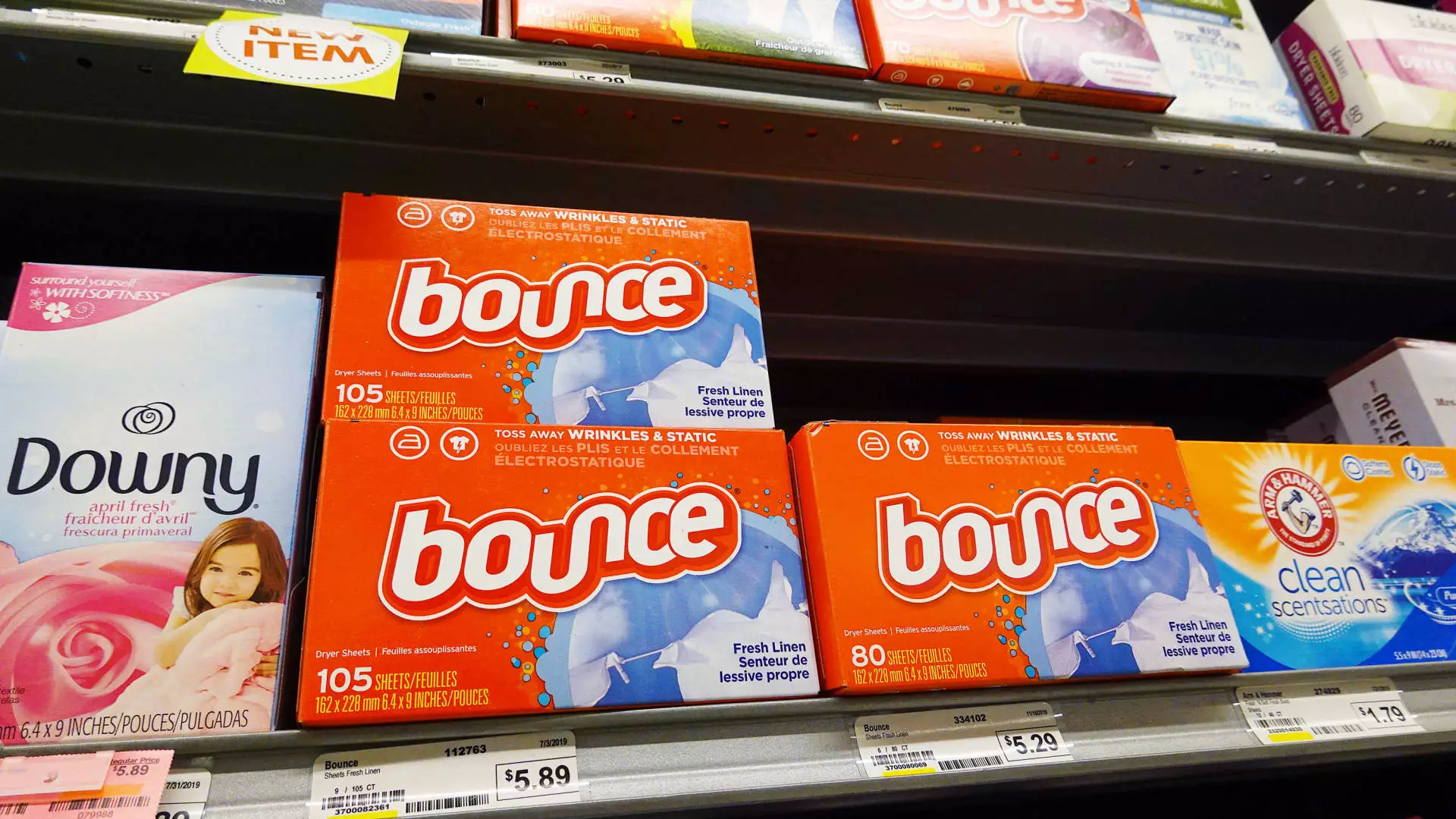Procter & Gamble (P&G) recently unveiled its first-quarter earnings, revealing some troubling trends that highlight the challenges the multinational corporation faces in the current global market. The company posted revenues of $21.74 billion, which fell short of Wall Street’s expectations of $21.91 billion. The resultant impact on the stock price—a 1% decline in premarket trading—serves as a bellwether for investor confidence in P&G’s future performance. In contrast to the slight positive surprise in adjusted earnings per share, which came in at $1.93 versus the anticipated $1.90, the overall picture painted a concerning narrative of demand erosion.
Despite enduring a compressed revenue landscape, P&G reported a net income of $3.96 billion, which translated to $1.61 per share. This marks a significant drop from the previous year’s $4.52 billion and corresponding earnings of $1.83 per share. Analysts might have anticipated a smoother quarter bolstered by P&G’s innovative pricing strategies, but the stark reality revealed that falling volumes across critical segments were a primary catalyst for the disappointing outcomes.
A pivotal indicator of demand health, P&G’s volume metrics presented a mixed bag. While U.S. sales remained resilient, with volume growth reported in eight out of ten categories, international markets—particularly Greater China—raised significant red flags. The company’s inability to capitalize on post-pandemic recovery signals, especially within China’s hair care and oral care divisions, returned disappointing results with declines in volume noted across the board. This is particularly alarming considering that China is P&G’s second-largest market.
The company’s Chief Financial Officer, Andre Schulten, painted a dire picture of the market outlook in China, stating, “The market continues to be weak and will be weak, we believe, for a number of quarters to come.” This forecast, coupled with an environmental backdrop characterized by fluctuating consumer confidence and government interventions intended to spur economic activities, places P&G in a precarious position.
Among the most notable declines was the performance of P&G’s beauty division, which houses iconic brands such as Pantene and Olay. Volume here fell by 2% overall, but the organic sales drop of over 20% within the skincare segment, particularly pertaining to the luxury SK-II brand, signifies deeper issues at play. The ramifications of pandemic disruptions have far from subsided, and the brand now confronts significant hurdles in consumer re-engagement.
Moreover, the baby care segment, which plays a crucial role in P&G’s portfolio through established names like Pampers, reported mid-single-digit declines in organic sales—a worrisome sign given the product category’s historical stability. These declines reflect consumers’ shift in purchasing behavior amidst economic uncertainties, signaling a broader trend that could challenge P&G’s overall growth trajectory.
Bright Spots and Future Forecasting
In light of the challenging environment, P&G’s grooming division—featuring its Gillette and Venus brands—managed to report a commendable 4% growth in volume, thanks primarily to product innovations. Similarly, the fabric and home care sector, encompassing trusted brands such as Swiffer and Tide, also displayed resilience with a 1% volume increase.
Looking forward, Procter & Gamble reiterated its fiscal 2025 guidance, holding firm on an expectation of core net earnings per share ranging between $6.91 and $7.05, alongside anticipated revenue growth of 2% to 4%. However, achieving these targets will likely depend on the company’s ability to revive demand in underperforming markets and successfully navigate the complexities of consumer behavior shaped by ongoing economic pressures.
While P&G continues to demonstrate strengths in certain segments, the overall financial picture presents a series of challenges that require strategic adaptations to maintain market position. As the consumer landscape evolves, mindful navigation of pricing strategies, product innovations, and regional market dynamics will be paramount to P&G’s sustained success.

